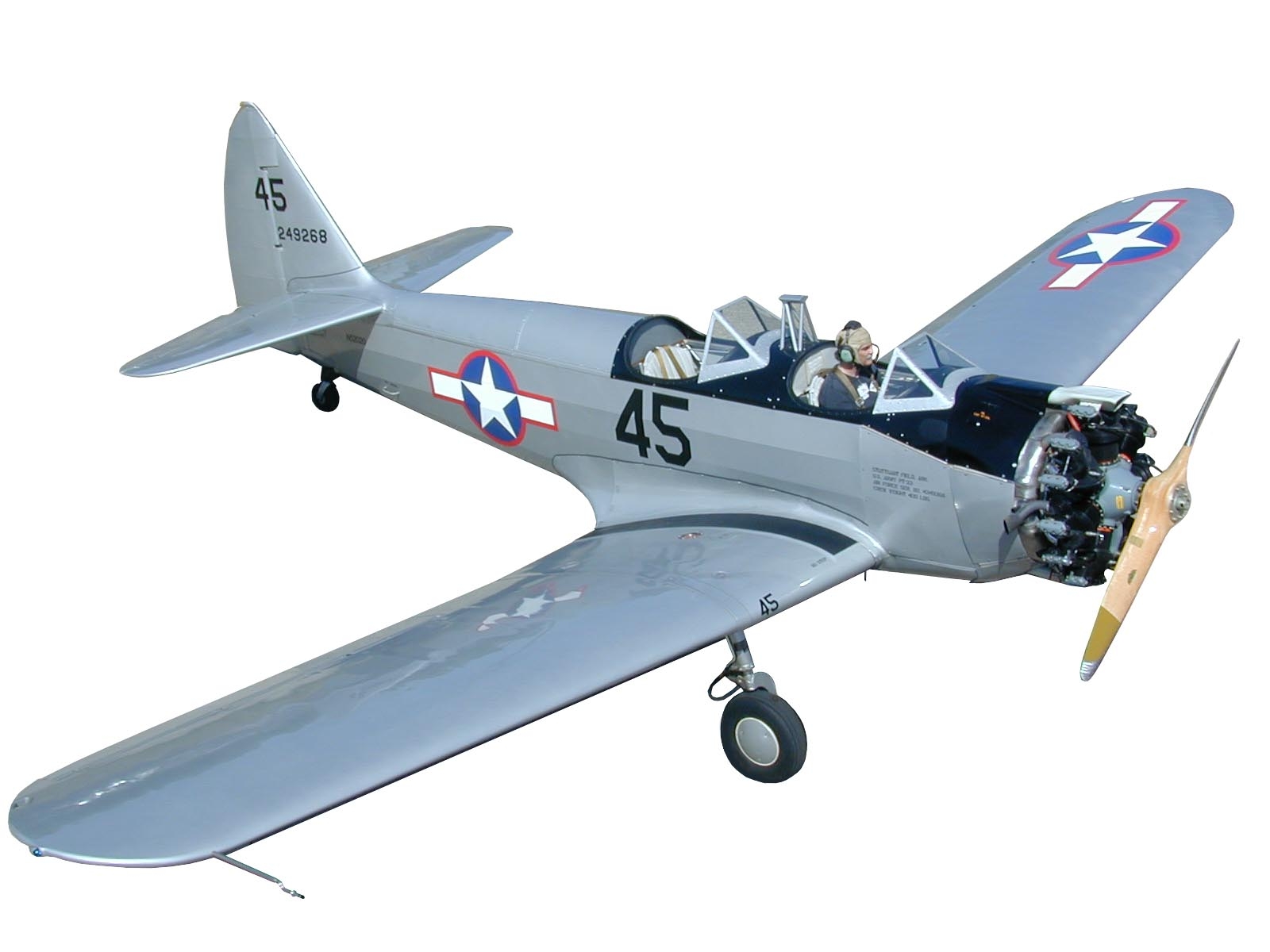
After its military service ended shortly after the war, the War Assets Administration sold #291 for $610 in 1946. The little trainer changed hands thirteen more times before being donated to the Air Zoo. The PT-23 received a minor refurbishing in 1963, but suffered a serious accident in May, 1971. Alfred P. Krest rebuilt almost the entire plane in 1976, but she again slid into near-dereliction by the time Tom and Jane Austin, bought the plane in 1981. In fact, the first thing Tom Austin did after ferrying the plane to Greeneville was to remove the fabric covering so he would not be tempted to fly her. Years of exposure had taken their toll. Tom had been in Air Force ROTC at the University of Tennessee, and owned several warbirds, including a T-6, three T-28s, two Luscombs, and an AD Skyraider. But his dad had owned a PT-23, and it was the first plane in which Tom had flown. So the Cornell had a special place in his heart too. After Tom purchased the aircraft from John Baugh of Nashville, he fully intended to restore the aircraft to tip-top condition. Using an ice pick, Tom probed every inch of the fuselage frame and found three areas where the ice pick went right through the metal tubing! After cleaning, the frame received extensive repairs and a fresh coat of paint. The “lobster cage”, as the ventral wooden belly of the fuselage is known, required a complete rebuild. Tom hired a structural engineer to do the job. The man was a master woodworker, and had built two of his own planes so Tom struck a deal with him to overhaul the wings as well. But then love intervened. Though this gentleman was 70 years old and had just lost his wife, he fell in love with another woman, got married, and promptly forgot about the project. Tom Austin just could not find anyone else he trusted enough to do the job correctly.
Unfortunately, Tom was in the process of changing jobs and relocating. With no one to work on the plane, and no place to store it, he was afraid parts would “walk off”. He and Jane made the decision to donate the plane to the Air Zoo. Tom said it was “difficult to part with the dream. The ‘Zoo’ was by far the best of all the alternatives.” Tom had a strong association with the Air Zoo, being its Hellcat pilot for some years, which is why he felt so keenly about the place. He signed the donation papers on May 19th, 1988.
Though one probably should not call the project a basket case, it was arrived at the Zoo in pieces, and the wooden parts were going to present a major challenge to the restoration team. Initially Greg and a hand full of volunteers had hoped the restoration project would be comparatively easy. But this is a very complicated aircraft, especially for a trainer, and required the skills of metal and wood workers, fabric layers, upholsterers, painters and artisan of several other varieties. Greg said, “In the beginning of the project, we thought we could maybe re-skin part of the wing, do a little repair work, and have a good airworthy airplane. “The deeper we dug, the more we realized there was no way our original plan was going to gel so we had to go ahead and completely disassemble it [the wing] and fix it.” This aircraft and its restoration do not really compare one-to-one with those for a P-47 Thunderbolt or F4U Corsair, however, considering the level of decay involved, this was going to be one of the most ambitious restorations that the Museum staff would undertake. (CLICK BELOW FOR THE NEXT PAGE).


Thanks for sharing, great story.